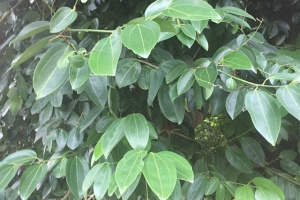[ad_1]
(Seychelles News Agency) – The Seychelles Investment Board (SIB) has registered an increase in investors in the cinnamon industry and efforts are being undertaken to assist them in their work.
The SIB chief executive officer, Anne Rosette, told SNA that SIB now has a list of 20 investors who are joining the cinnamon industry.
“We are quite satisfied with the way cinnamon exports from the Seychelles have picked up in 2020, and we are looking for ways to keep the industry sustainable,” said Rosette.
She said that the board is working to ensure that the cinnamon industry is one that is sustainable and is “working closely with the Department of Agriculture to establish whether we can establish cinnamon plantations”.
According to the SIB, it has already begun a study to determine whether there is a need for the cultivation of cinnamon tree.
“While we do have the bark to be exploited right now, we want to ensure that there is a steady supply of the crop in future,” she added.
Through this study, the authority will also be able to work with the Department of Agriculture on plans for it to meet its food production targets, while also providing the cinnamon industry with the trees needed for bark exploitation.
Figures from the National Bureau of Statistics (NBS) show that the amount of cinnamon the country exports substantially increased in 2021, going from 1 tonne in 2020 to nine tonnes in 2021 – bringing in around $2 million to the local economy.
In May 2021, the government announced its strategic objectives to increase the country’s revenue through increasing local production for exportation, reducing importation and reducing dependence on tourism.
One of the sectors that the western Indian Ocean archipelago’s government had decided to “shed a light on” was the cinnamon industry.
Those interested in exploiting the cinnamon bark are given large plots of land of around 22,000m2 – which they pay a fee of around SCR 6,000 every three months. The Seychelles Parks and Gardens Authority (SPGA) – also a partner in this initiative –sets the fees.
“However, as some people had voiced concerns about the fees, SPGA has revised them,” she said.
Seychelles has a long history with the cinnamon plantation industry, which was once the pillar and backbone of its economy. The spice was first introduced to the islands in 1772 by the order of Pierre Poivre – a French naturalist who was the administrator of Mauritius and La Reunion, which together with Seychelles were also French island colonies at the time.
“The cinnamon industry legacy-wise is one that is found in the Seychelles culture,” explained Rosette.
“The government decided to attack it in three ways which includes making land available for harvesters,” she added.
Seychelles is the 80th largest cinnamon exporter in the world out of 135 according to the Observatory of Economic Complexity (OEC) – an online data visualisation and distribution platform focused on the geography and dynamics of economic activities.
The platform shows the main markets Seychelles exports its cinnamon to are India and Germany.
The fastest growing import markets in cinnamon for Seychelles between 2019 and 2020 were Belgium, Andorra, and Canada, according to OEC.
As is the case with many businesses over the last three years, the COVID-19 pandemic had played a role in a decrease in cinnamon production.
“One of our major exporters, Globarom, is one that has seen a decrease in its exportation,” said Rosette.
Chaka Bros and Globarom are the two main exporters of cinnamon bark in the country.
Rosette is, however, positive about the future, saying “that now things have picked up and the figures show that…Once the industry is on its feet, we will then hand it over to the Department of Agriculture to continue nurturing it.”
[ad_2]
Source link




